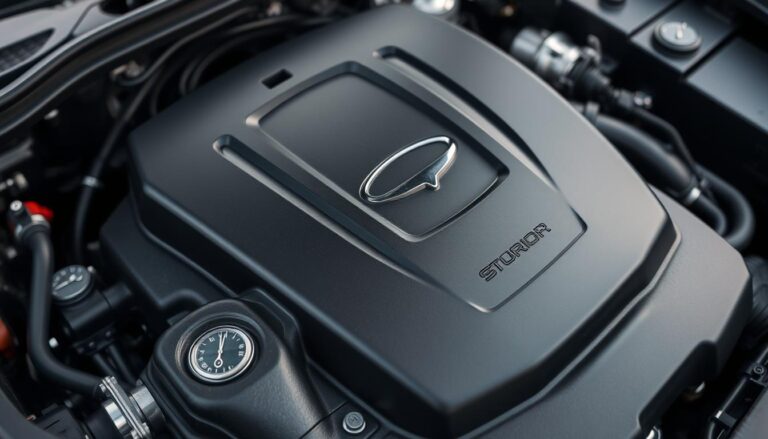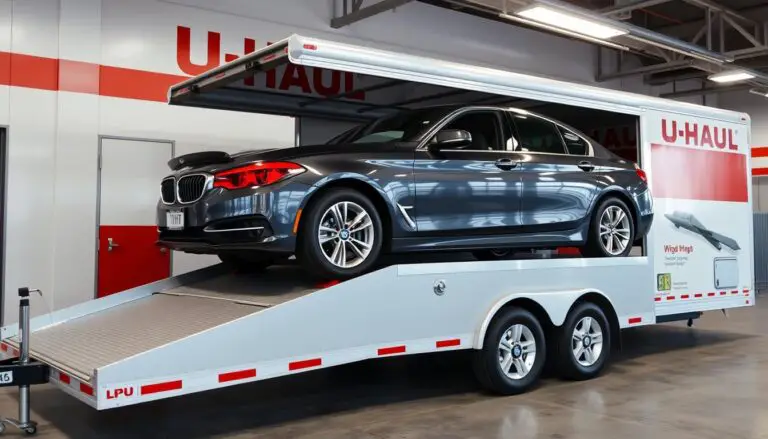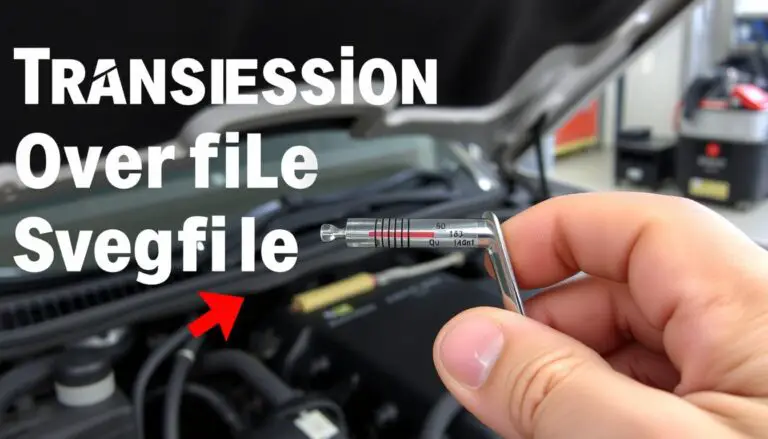Successfully jump-starting your car is just the first step in getting back on the road. It’s crucial to follow the right actions to ensure your vehicle’s safety and longevity. A jump start can be a lifesaver when you’re stranded with a dead battery.
However, it’s not just about getting the car started; it’s about what you do next to prevent further issues. Taking the correct actions after a jump start can help prevent damage to your vehicle’s electrical system and battery.
Key Takeaways
- Check your battery and electrical system for any damage.
- Recharge or replace your battery if necessary.
- Monitor your vehicle’s performance for any signs of issues.
- Consider having your battery tested.
- Keep an eye on your dashboard warning lights.
Understanding What Happens During a Jump Start
When faced with a dead battery, understanding the jump-starting process is crucial. Jump starting involves connecting your car’s battery to another vehicle’s battery using jumper cables, allowing the working vehicle’s battery to supply the power needed to start your car.
The Science Behind Jump Starting
Jump starting relies on the principle of using an external power source to energize your vehicle’s battery enough to start the engine. The process involves a series of electrical connections that transfer power from a donor vehicle to the vehicle with the dead battery.
The science behind this process is rooted in the basics of electrical circuits. When you connect the jumper cables correctly, you create a circuit that allows the donor vehicle’s battery to supply the necessary voltage to turn over your car’s engine. It’s essential to follow the correct procedure to avoid any damage to the electrical systems of either vehicle.
| Step | Description | Importance |
|---|---|---|
| 1 | Connect the positive (red) jumper cable to the positive terminal of the dead battery. | Ensures correct polarity and safety. |
| 2 | Connect the other end of the positive (red) jumper cable to the positive terminal of the donor vehicle’s battery. | Completes the positive circuit. |
| 3 | Connect the negative (black) jumper cable to the negative terminal of the donor vehicle’s battery. | Completes the negative circuit. |
| 4 | Connect the other end of the negative (black) jumper cable to a metal surface on the vehicle with the dead battery. | Provides a safe path to ground. |
Potential Risks to Your Vehicle’s Electronics
While jump starting is a safe procedure when done correctly, there are potential risks to your vehicle’s electronics if the process is not followed properly. Modern vehicles are equipped with sophisticated electronic systems that can be sensitive to power surges.
Incorrectly connecting the jumper cables can cause a surge that may damage your vehicle’s electrical system, including the onboard computer, sensors, and other critical components. To mitigate this risk, it’s crucial to ensure that the cables are connected correctly and that both vehicles are not touching.
Additionally, vehicles with advanced safety features, such as airbag control modules and anti-lock braking systems (ABS), require extra caution. Ensuring that the jump start is done according to the manufacturer’s guidelines can help prevent damage to these sensitive systems.
Immediate Steps After Jump Starting Your Car
Jump-starting your car is just the first step; what you do next matters. Ensuring your safety and the well-being of your vehicle is paramount.
Properly Disconnecting the Jumper Cables
After the jump start, disconnecting the jumper cables in the correct order is crucial to avoid damaging your vehicle’s electrical system. The correct sequence is as follows:
- Disconnect the negative (black) cable from your car’s engine.
- Disconnect the negative (black) cable from the donor vehicle’s engine.
- Disconnect the positive (red) cable from the donor vehicle’s engine.
- Disconnect the positive (red) cable from your car’s engine.
Initial Engine Operation Guidelines
Once the cables are removed, let your car’s engine run for a few minutes. This helps recharge the battery. It’s also a good practice to rev the engine gently to increase the alternator’s output and aid in recharging.
| Action | Purpose | Benefit |
|---|---|---|
| Let the engine run | Recharge the battery | Prevent immediate reoccurrence of dead battery |
| Rev the engine gently | Increase alternator output | Aid in faster recharging |
Monitoring Dashboard Warning Lights
After a jump start, monitor your dashboard for any warning lights. These lights can indicate issues that need immediate attention. If any lights appear, consult your vehicle’s manual or contact a professional mechanic.
By following these steps, you can ensure your vehicle’s health and safety after a jump start. Proper battery care and adherence to driving guidelines post-jump start are crucial for preventing further issues.
What to Do After Jump Starting Car: Essential Next Steps
After a jump start, driving your car correctly and managing electrical loads can significantly impact your battery’s ability to recharge. It’s essential to understand the steps to take immediately after jump-starting your vehicle to ensure it runs smoothly and to prevent future starting issues.
Required Driving Time to Recharge the Battery
To sufficiently recharge your car’s battery after a jump start, you need to drive your vehicle for a considerable amount of time. The exact duration can vary based on factors such as the type of vehicle, the condition of the battery, and the efficiency of the alternator. Generally, driving for at least 30 minutes to an hour at moderate speeds can help in recharging the battery. For more information on jump-starting and battery care, you can visit this resource.

Avoiding Unnecessary Electrical Loads
It’s advisable to minimize the use of electrical components such as the radio, air conditioning, and headlights immediately after a jump start. These accessories put additional strain on the battery, potentially hindering the recharging process. By reducing electrical loads, you allow the alternator to focus on recharging the battery.
When to Seek Professional Help
If your car doesn’t seem to be holding a charge or if you notice other issues such as dimming headlights or slow engine crank, it may be time to seek professional help. A mechanic or auto electrician can diagnose the root cause of the problem, whether it’s a faulty alternator, a weak battery, or another issue. For instance, if you’re experiencing issues with your BMW battery discharge, you might find helpful insights on this page.
By following these automotive tips, you can help ensure your car’s battery remains healthy and functional, reducing the likelihood of being stranded with a dead battery in the future.
Diagnosing the Root Cause of Battery Failure
Identifying the underlying reason for your battery’s failure can save you from future car troubles. Diagnosing the root cause involves understanding the common reasons for battery drainage, testing your charging system, and identifying any parasitic drains.
Common Reasons for Battery Drainage
Battery drainage can occur due to several reasons. Leaving your headlights or interior lights on can quickly drain your battery. A faulty alternator can also prevent your battery from charging properly. Additionally, a parasitic drain caused by a malfunctioning component in your vehicle can slowly drain your battery over time.
For more information on how to test and replace a dead car battery, you can visit Bridgestone’s guide on the topic.
Testing Your Charging System
Your car’s charging system is crucial for maintaining your battery’s health. Testing it involves checking the alternator belt for wear and ensuring that the voltage output is within the recommended range. A multimeter can be used to measure the voltage across the battery terminals when the engine is running.
| Component | Recommended Value | Actual Reading |
|---|---|---|
| Alternator Belt Tension | 100-150 N | 120 N |
| Voltage Output | 13.5-14.5 V | 14.2 V |
Identifying Parasitic Drains
A parasitic drain can be challenging to identify but is essential for preventing future battery failures. Using a multimeter to measure the current draw when the vehicle is off can help identify if there’s a parasitic drain. Common culprits include alarm systems, phone chargers, and faulty wiring.

By understanding and addressing these issues, you can significantly reduce the risk of battery failure and ensure your vehicle remains in good condition, ultimately saving you money on car repair costs.
Preventing Future Jump Starts
Preventing future jump starts requires a combination of regular maintenance and awareness of your vehicle’s condition. By taking proactive steps, you can minimize the risk of being stranded with a dead battery.
Regular Battery Maintenance Tips
Regular battery maintenance is crucial to extending its lifespan and preventing unexpected failures. Here are some key tips:
- Check the battery terminals for corrosion and clean them as needed.
- Ensure the battery water level is adequate, if applicable.
- Have your battery tested periodically to identify potential issues before they become major problems.
For more information on what to do when your car won’t start, you can visit this resource for additional guidance.
Signs Your Battery Needs Replacement
Recognizing the signs that your battery needs to be replaced can save you from being stranded. Look out for:
- Slow engine crank or difficulty starting the engine.
- Dim or flickering headlights.
- Swollen or bloated battery case.
Investing in Emergency Equipment
Investing in emergency equipment like a portable jump starter can be a lifesaver. These devices are compact, easy to use, and can get you back on the road quickly in the event of a battery failure.
By following these tips and being aware of your vehicle’s condition, you can significantly reduce the likelihood of needing a jump start in the future.
Conclusion
After a successful jump start, it’s essential to take the right steps to ensure your vehicle’s longevity and performance. By following the outlined guidelines, you can minimize the risk of future battery-related issues and keep your car in good condition.
Regular maintenance is key to avoiding the inconvenience of a dead battery. Implementing automotive tips such as monitoring your dashboard warning lights and avoiding unnecessary electrical loads can significantly impact your vehicle’s health.
Being prepared for emergencies by investing in the right equipment and understanding how to jump start your car properly can save you time and stress. By staying proactive and informed, you can ensure a smoother driving experience.
FAQ
What should I do immediately after jump-starting my car?
After jump-starting your car, you should properly disconnect the jumper cables in the correct order, let the engine run for a few minutes to recharge the battery, and monitor your dashboard for any warning lights.
How long should I drive my car to recharge the battery after a jump start?
The required driving time to recharge the battery can vary depending on several factors, including the type of vehicle and the condition of the battery. Generally, driving for at least 15-30 minutes can help recharge the battery.
What are some common reasons for battery drainage?
Common reasons for battery drainage include leaving headlights or interior lights on, a faulty alternator, or a parasitic drain caused by a malfunctioning component in your vehicle.
How can I prevent future jump starts?
To prevent future jump starts, you should perform regular battery maintenance, such as checking the battery terminals for corrosion and having your battery tested periodically. You should also be aware of the signs that your battery needs replacement, such as slow engine crank or dim headlights.
What is a parasitic drain, and how can I identify it?
A parasitic drain is a malfunctioning component in your vehicle that continues to draw power from the battery even when the engine is turned off. Identifying a parasitic drain requires technical knowledge and specialized equipment, but it can be done by a professional mechanic or auto electrician.
Should I invest in emergency equipment like a portable jump starter?
Investing in a portable jump starter can be a lifesaver in case your car battery dies again. It’s a convenient and safe way to jump-start your car without relying on another vehicle.
What are the signs that my battery needs to be replaced?
Signs that your battery needs to be replaced include slow engine crank, dim headlights, or a battery that’s more than three years old. If you’re unsure, you can have your battery tested by a professional mechanic or auto electrician.


